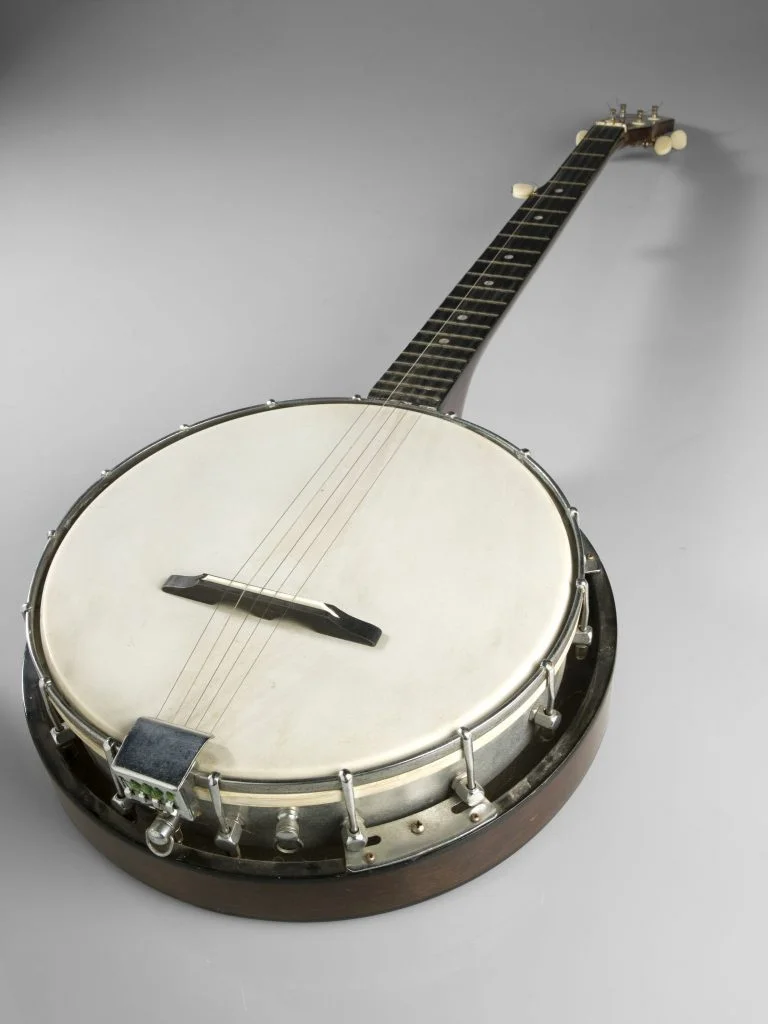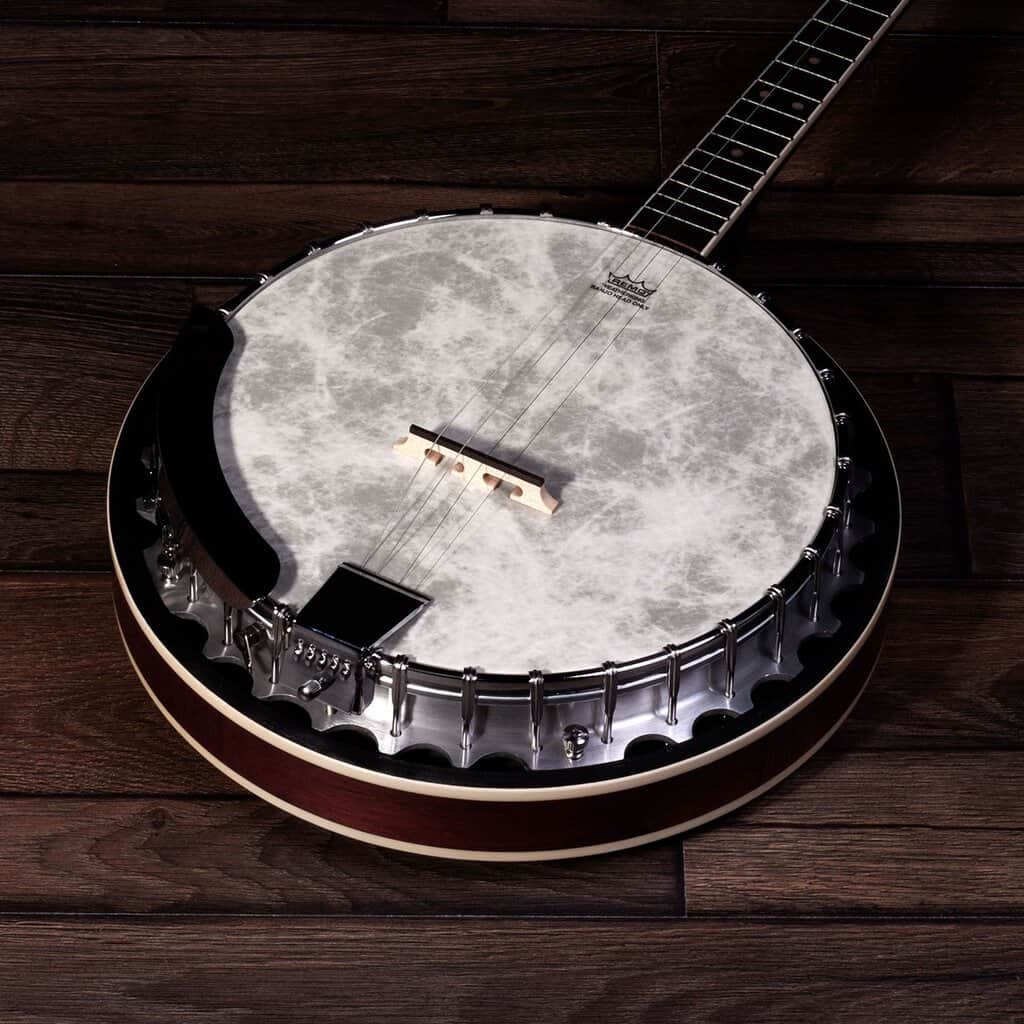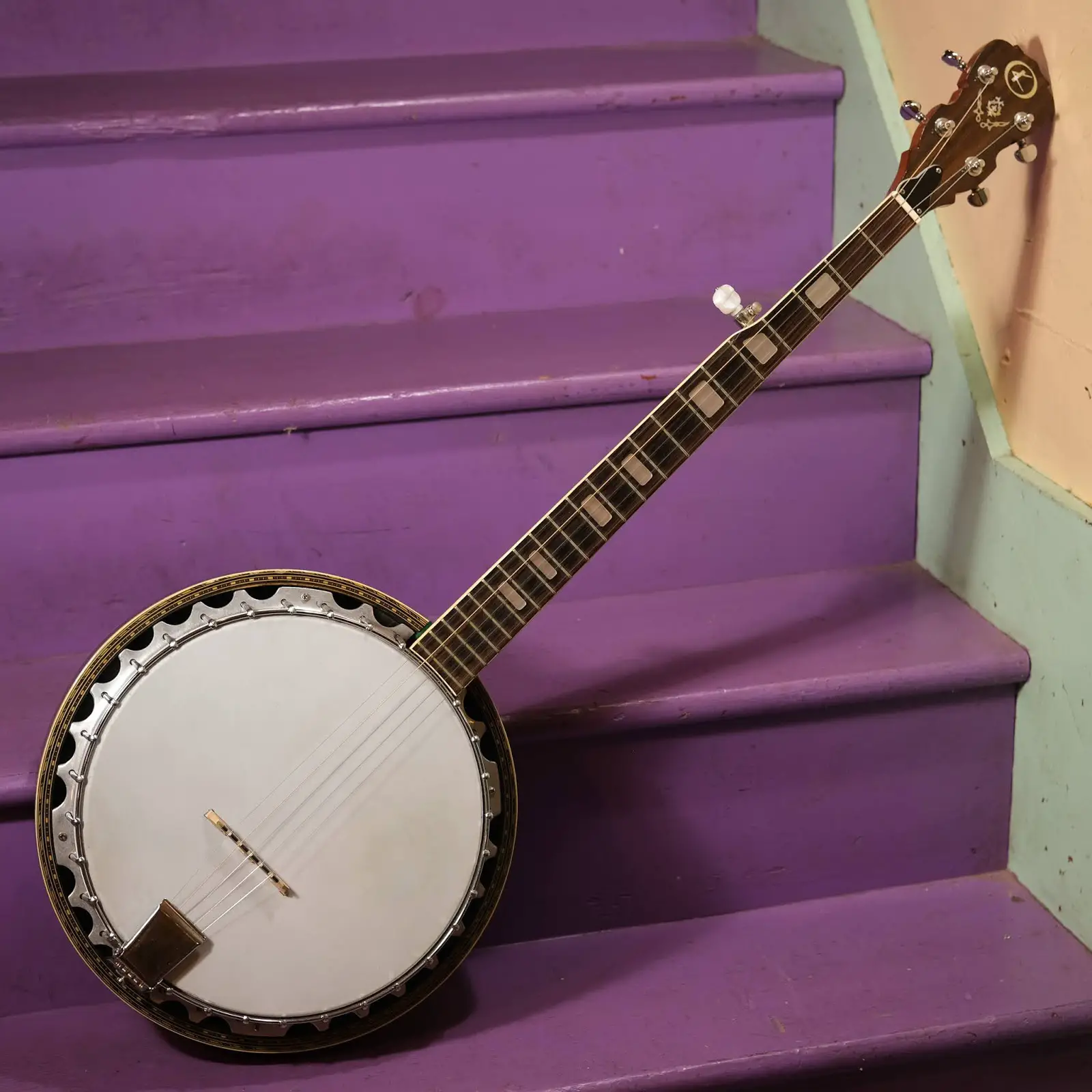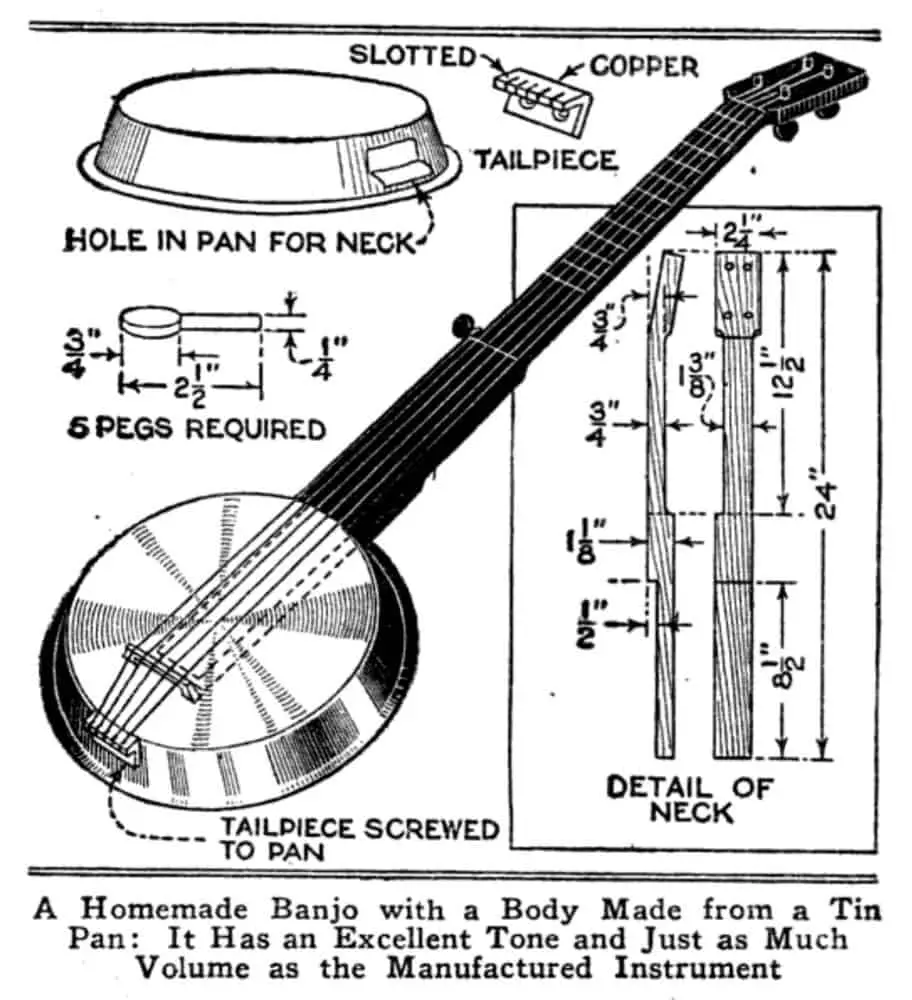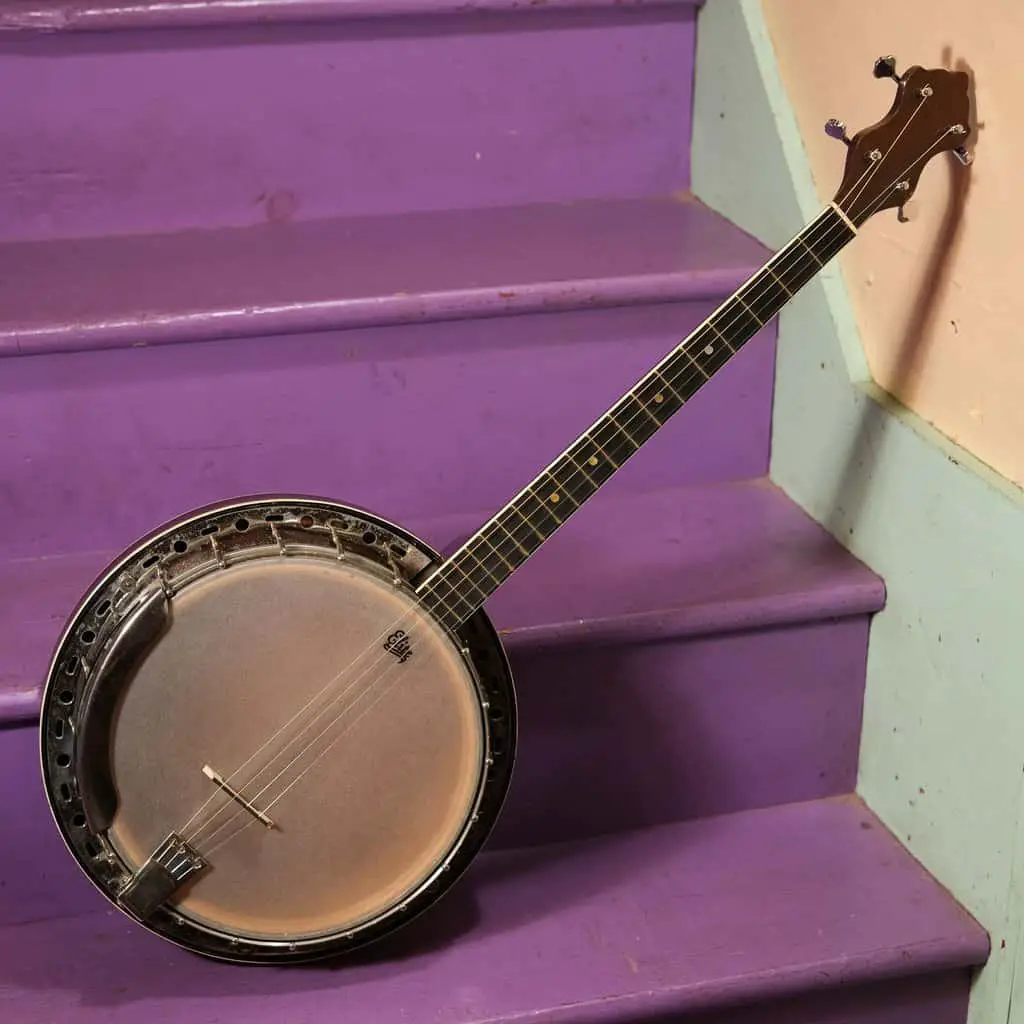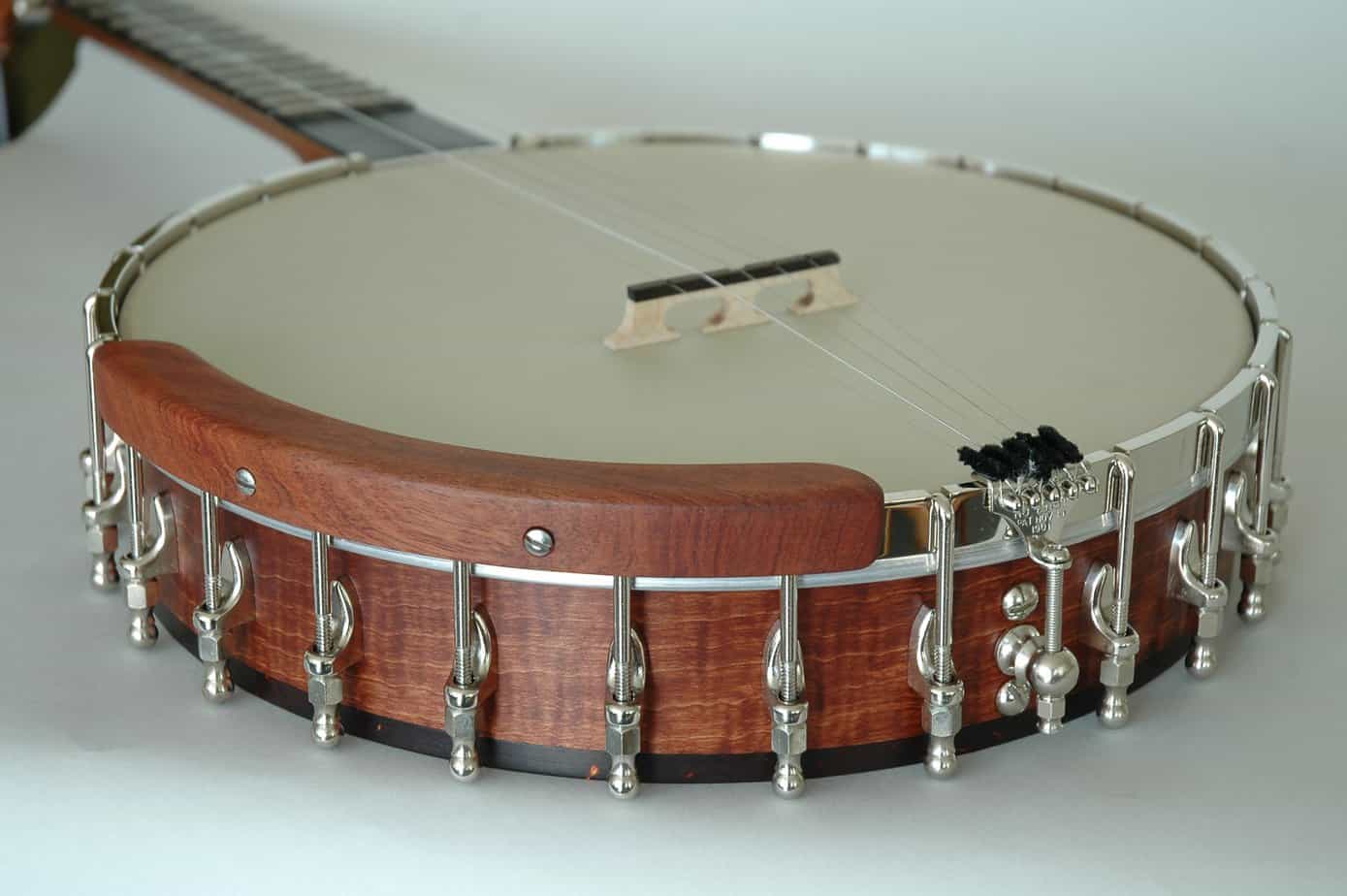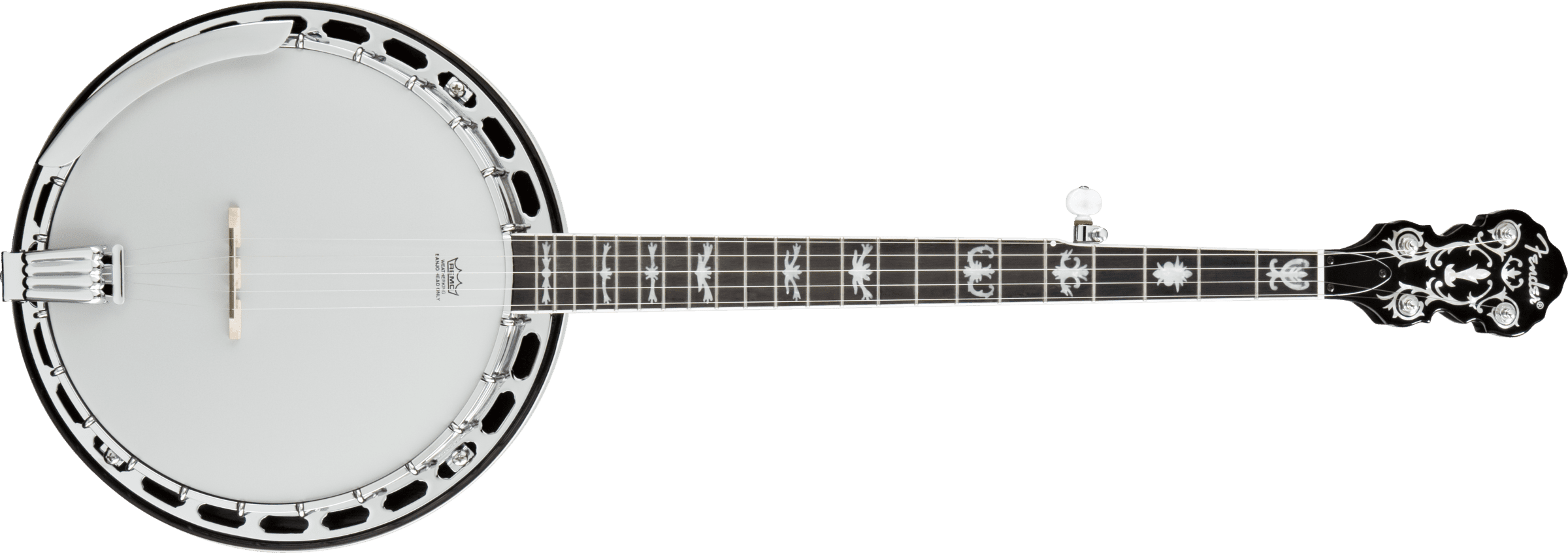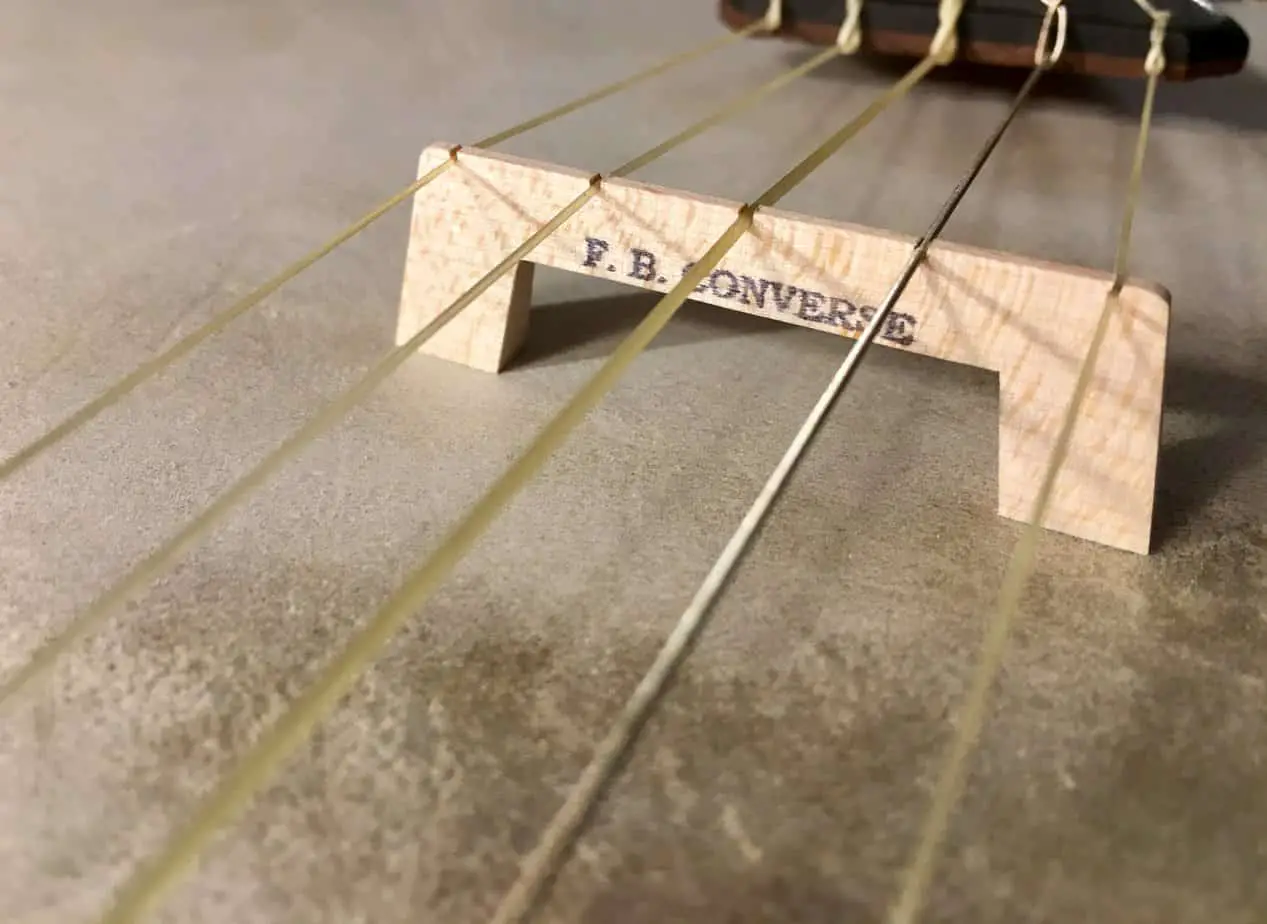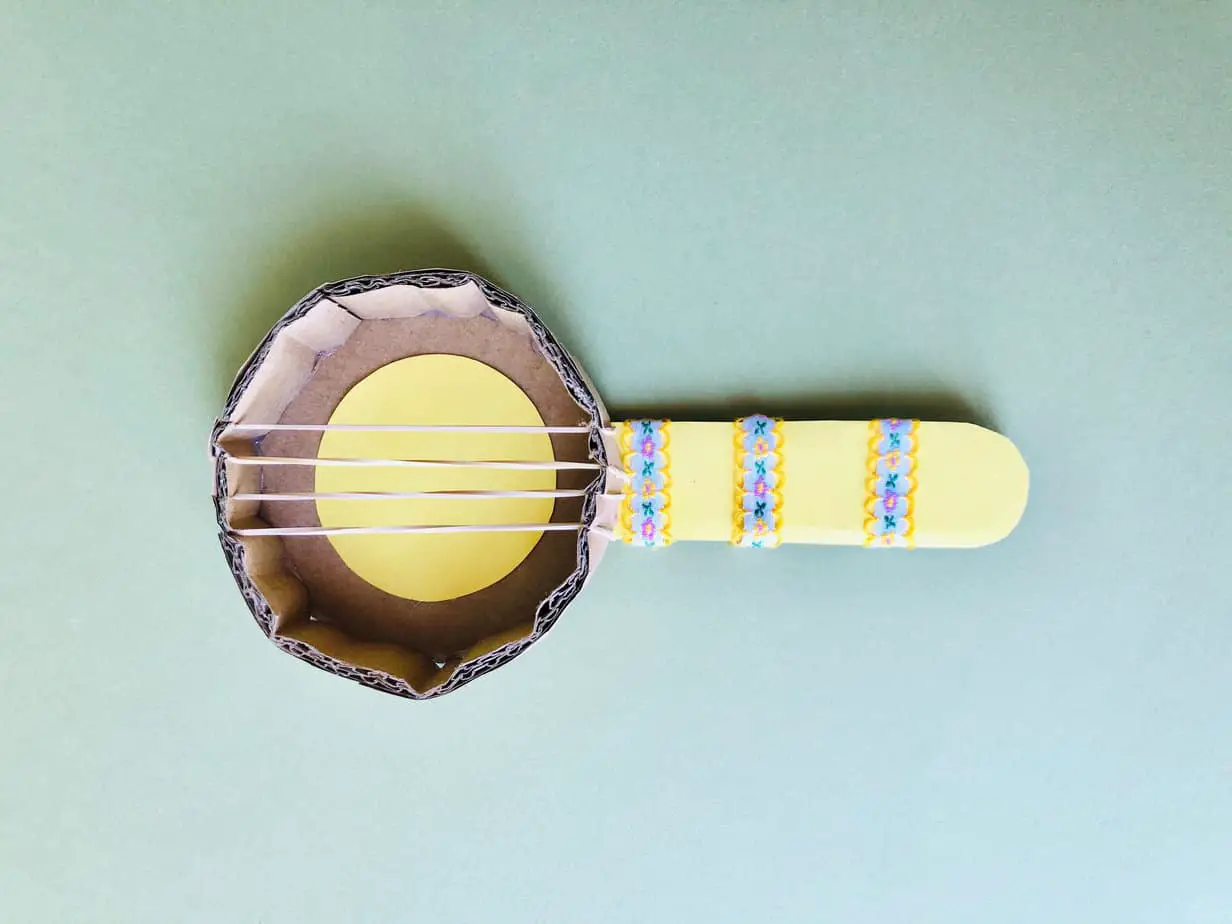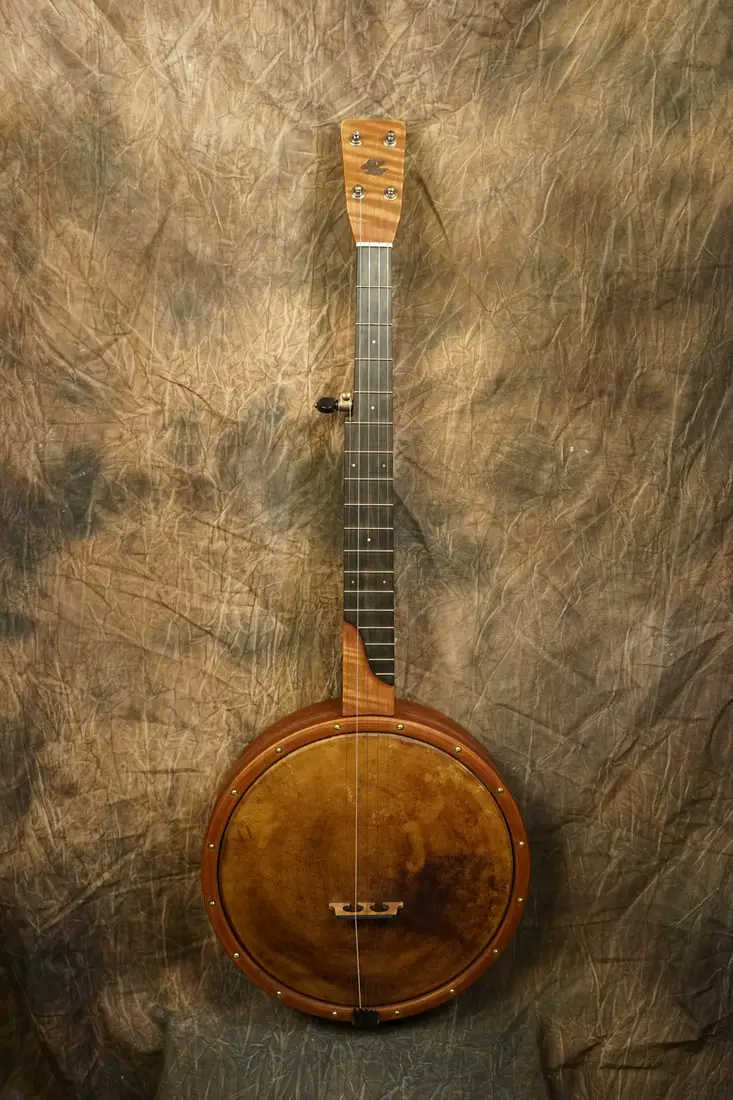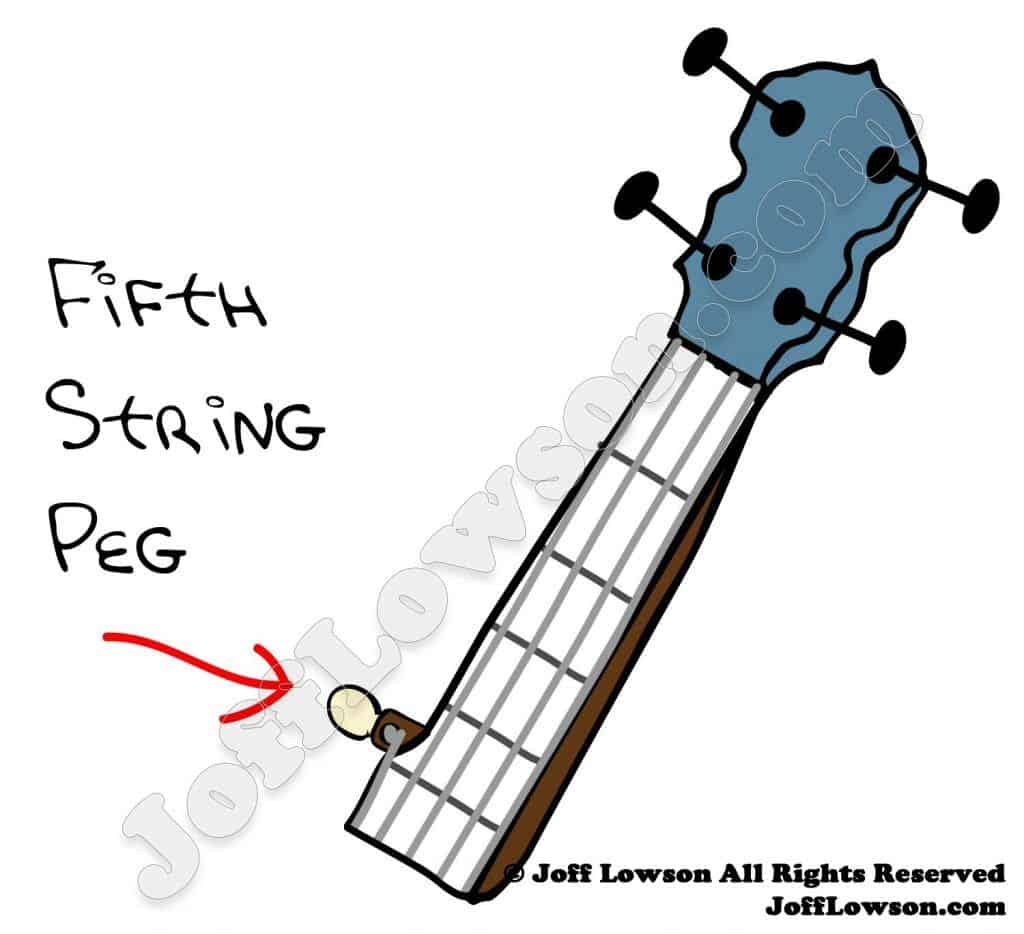Have you ever heard the twangy sound of a banjo and wondered “what is a banjo made of?” The banjo is an iconic instrument that has gained popularity over the past century, thanks to its unique sound and appearance. As it turns out, the materials used to make a banjo are just as unique as the instrument itself. In this article, I will explore the different materials that go into making a banjo and explain why each is so important. By the end of this article, you will have a better understanding of the instrument and its construction. So let’s take a look at what a banjo is made of!
History of the Banjo
The banjo is believed to have originated in West Africa, where it was known as the “akonting”. It then spread to the Caribbean, where it was adapted and given the name “banza”. In the United States, the banjo was popularized by African-American slaves who used it to create a unique sound, which eventually led to the instrument being adapted by white musicians in the late 19th century. This adaptation of the banjo was known as the minstrel banjo, and it was used in a variety of musical styles, including ragtime, bluegrass, and jazz.
The modern banjo is typically made of a wooden frame with a stretched membrane on top, usually made of either calfskin or plastic. The body of the banjo is usually made of hardwood, such as maple or rosewood, and the neck is typically made of either maple or mahogany. The instrument is strung with metal strings and is played with either a pick or a fingerpicking technique. The banjo is used in a variety of musical styles, including folk, bluegrass, country, and jazz.
Types of Banjos
| Banjo Type | Number of Strings | Tuning |
|---|---|---|
| 5-String Banjo | 5 | G, D, G, B, D |
| 4-String Banjo | 4 | C, G, B, D |
| 6-String Banjo | 6 | E, A, D, G, B, E |
Banjos come in various types, the most popular being 5-string, 4-string, and 6-string banjos. 5-string banjos have five strings, typically tuned to G, D, G, B, D. 4-string banjos have four strings, usually tuned to C, G, B, D. 6-string banjos have six strings, usually tuned to E, A, D, G, B, E.
4-String Banjos
- Usually have a body made of a metal pot with a round, flat-topped wooden rim.
- Have a short neck attached to the body.
- The neck is usually made of hardwood, such as maple or mahogany.
- The strings are made of metal and attached to a tailpiece at the bottom of the neck.
- The strings are tuned to a G-D-G-B tuning.
- The strings are usually strummed or plucked with the fingers or a pick.
- The bridge is usually made of hardwood or plastic and rests on the top of the rim.
- The bridge helps to amplify the sound of the strings.
- The strings are usually held in place on the neck by a nut and a string tree.
- The fingerboard is usually made of rosewood, maple, ebony, or other hardwoods.
- The fingerboard is used to press the strings down and create different sounds.
- The headstock is usually made of hardwood and houses the tuners.
- The tuners are used to adjust the tension of the strings.
5-String Banjos
| Part | Material |
|---|---|
| Pot | Wood or metal |
| Neck | Wood or metal |
| Fingerboard | Wood |
| Head | Plastic or calfskin |
| Bridge | Wood or metal |
| Tuners | Metal |
| Strings | Steel or Nylon |
5-string banjos are a type of fretted string instrument popular in traditional American music. They are typically made with a wooden or metal pot, neck, and fingerboard, as well as a plastic or calfskin head, a wooden or metal bridge, metal tuners, and steel or nylon strings. The 5-string banjo is distinguished from other banjos by its additional string, which is usually tuned to a higher pitch than the other strings. This additional string allows players to add extra notes to their playing, creating a richer sound.
6-String Banjos
- Have 6 steel strings, similar to a guitar
- Usually tuned to an open G chord which allows for more chords to be played
- Fingerboard is typically flat and wider than other banjos
- Neck is shorter than other banjos, often with a slimmer profile
- Can be made of a variety of materials, such as maple, mahogany or rosewood
- Can be used to play a variety of styles, from blues to jazz to folk
Parts of a Banjo
- Neck
- Head
- Neck Heel
- Tuning Pegs
- Frets
- Fingerboard
- Rim
- Tension Hoop
- Tailpiece
- Bridge
- Strings
A banjo is composed of several parts that work together to create its unique sound. The neck is the long slimmer part of the banjo, typically made out of wood. At the end of the neck is the neck heel, which connects the neck to the head. The head is the top part of the banjo and is where the strings are attached. It is typically made out of animal skin or plastic. The tuning pegs are located on the top of the neck and are used to adjust the tension of the strings. The frets are the thin metal wires that run along the fingerboard. They are used to create different notes and chords when the strings are pressed against them. The fingerboard is the flat surface on the top of the neck and is where the strings and frets are located. The rim is the circular part of the banjo that attaches to the head and holds the tension hoop and strings in place. The tension hoop is a metal hoop that holds the strings in place. The tailpiece is the metal bar that connects the strings to the bridge. The bridge is the piece of wood that the strings rest on and is used to amplify the sound of the banjo. Finally, the strings are the metal wires that run along the neck and are plucked to create the sound of the banjo.
Neck
The banjo neck is typically made of maple, walnut or mahogany. It is usually fretted and includes the headstock, fingerboard, and tuning pegs. The neck typically has a truss rod that can be adjusted to reduce the amount of bow in the neck. The neck holds the strings at the proper tension and is connected to the pot assembly.
Head
- Neck
- Fingerboard
- Tuning pegs
- Bridge
- Strings
- Pot
- Tone ring
- Rim
- Tailpiece
- Head
The head of a banjo consists of a drum-like membrane which is made of either plastic or calfskin, and is tensioned on the rim with a tension hoop. The head is vital to the sound of the banjo, as it amplifies the vibrations of the strings, creating the distinct banjo sound.
Resonator
A banjo is composed of a circular frame, a resonator and a neck. The resonator is a material, usually wood or metal, that is attached to the back of the banjo’s frame. The purpose of the resonator is to project and amplify the sound of the banjo. The shape and design of the resonator can vary widely, but the most common design is a flat, wooden plate that is curved to fit the shape of the frame. The resonator is usually secured to the frame by screws or bolts and can be covered with a decorative metal plate.
Tailpiece
The tailpiece is a small metal device that is connected to the bridge and holds the strings in place. It is usually made of metal and has several holes for the strings to pass through. It is also responsible for adjusting the tension of the strings, allowing for different levels of sound quality. The tailpiece also provides a place for the strings to be anchored, allowing for a more even distribution of sound throughout the banjo.
Strings
A banjo typically has four or five strings. The four-string banjo is usually tuned either to open G or open C. The fifth string, or drone string, is usually tuned to a fifth below the fourth string. The strings are typically made of steel, but nylon and gut strings can be used as well. The strings can be plucked with the fingers or with a pick.
Bridge
- The bridge is the part of the banjo that the strings rest on.
- It is a flat, wooden piece that attaches to the top of the banjo.
- The strings are held in place by the bridge, and it helps to give the banjo its distinct sound.
- It also helps to keep the strings in tune, and can be adjusted to raise or lower the strings for different playing styles.
Tuners
A banjo consists of a circular metal rim, a metal tension hoop, a bridge, a tailpiece, strings, and tuners. The tuners, also known as keys, are located at the head of the banjo and serve to adjust the pitch of the strings. Tuners are usually metal gears, either enclosed in a plastic housing or mounted directly to the banjo neck. They are operated by turning a knob, which is connected to a gear inside the tuner. As the gear turns, it tightens or loosens the string, which changes the pitch of the string.
Materials Used to Make Banjos
Banjos are musical instruments that are typically made up of a wooden neck with frets and a round, open-backed resonator, which are connected by a metal rim and tensioned by strings. The main materials used to make banjos include wood, metal, and plastic.
Wood is the most commonly used material for banjos, as it is used for the neck, resonator, and rim. The neck is typically made from hard woods such as maple or walnut, while the resonator and rim are usually made from softer woods such as mahogany or birch.
Metal is used for the strings and the tensioning hooks and nuts that hold the strings in place. Steel or brass strings are the most common materials used for the strings, while brass is used for the tensioning hooks and nuts.
Plastic is used for the fingerboard, which is the flat surface at the top of the neck that the strings are stretched across. The fingerboard is typically made from a durable plastic material such as rosewood or ebony.
These materials are combined to create a banjo that produces a unique sound. The combination of materials used to make banjos can vary depending on the type of banjo being made, as some types of banjos may require different materials to make them.
Crafting a Banjo
| Step | Description |
|---|---|
| 1 | Gather the necessary materials, which include a pot, a neck, strings, metal rod, and a bridge. |
| 2 | Drill a hole in the center of the pot and insert the metal rod. |
| 3 | Attach the neck to the metal rod, using wood glue and screws. |
| 4 | Drill holes in the neck and attach the strings. |
| 5 | Attach the bridge to the pot. |
Once the banjo is complete, the strings must be tuned to the desired pitch.
Banjo Maintenance
| Activity | Frequency |
|---|---|
| Regularly check for loose screws | Monthly |
| Clean and lubricate moving parts | Yearly |
| Replace strings | As needed |
| Check head tension | Yearly |
| Check neck angle | Yearly |
| Re-fret | As needed |
Banjo maintenance is important for keeping your instrument in good condition and playing its best. It is recommended to check for loose screws regularly, clean and lubricate moving parts at least once a year, and replace strings as needed. The head tension and neck angle should also be checked every year, and it may be necessary to re-fret the instrument as needed.
Playing the Banjo
The banjo is a stringed instrument that is played by plucking or strumming the strings. It generally consists of a neck, a resonator, a fingerboard, and a head. The strings are typically made of metal, though some banjos may use nylon or other materials. The fingerboard is usually made of hardwood, though some banjos may use softer woods. The resonator is typically a metal bowl or hoop, which amplifies the sound of the instrument. The head is usually made of animal skin, though some banjos may use synthetic materials.
Playing the banjo involves holding the instrument in the lap, with the neck in the left hand and the resonator in the right. The strings are then plucked or strummed with either the fingers or a pick. The strings can be tuned to different pitches, allowing for a wide range of musical styles to be played. The banjo can be used for solo performances, accompaniment to other instruments, and in ensembles. It is a versatile instrument, capable of producing a wide range of tones and sounds.
Banjo Variations
- 4-string banjo: Typically made of a wooden rim and head, a metal tone ring and a wooden or synthetic neck.
- 5-string banjo: Made of a wooden rim and head, a metal tone ring, and a wooden or synthetic neck but with a fifth string.
- 6-string banjo: Made of a wooden rim and head, a metal tone ring, and a wooden or synthetic neck but with six strings.
- Electric banjo: A 5-string banjo modified with an electric pick-up, amplifier, and tone and volume controls.
- Banjola: A hybrid instrument with a banjo neck and a mandolin body.
- Banjophone: A hybrid instrument with a banjo neck and a guitar body.
- Banjitar: A hybrid instrument with a banjo neck and a guitar body.
- Banjo mandolin: A hybrid instrument with a banjo head, a mandolin body and a mandolin bridge.
- Banjo ukulele: A hybrid instrument with a banjo head and a ukulele body.
- Banjo cello: A hybrid instrument with a banjo head and a cello body.
Frequently Asked Questions
What Materials are Used to Make a Banjo?
A banjo is mainly constructed from wood, metal, and plastic. The body is typically made of a hardwood like maple or mahogany and fitted with a head made of plastic or animal skin. The neck is also wood, typically made of a hardwood like maple or mahogany, and is often fretted. The strings are either metal or nylon, and the tuning pegs are usually made from metal. The bridge is typically made from plastic or hardwood, and the tailpiece is usually made from metal.
How is a Banjo Constructed?
A banjo typically has five strings and a circular body, which is usually made of a drum-like material covered by a membrane. The head is usually made of plastic or calfskin, and the neck is usually made of hardwood. The banjo is held in place by a bridge that rests on the head. The strings are attached to the bridge and then run down the neck and over the body, where they are secured to the tailpiece. The strings can be adjusted by turning the pegs on the headstock. The strings are then plucked with the fingers or a pick.
What Makes a Banjo Unique?
A banjo is a stringed musical instrument that is distinguished by its three- or four-stringed neck and a circular body. It is typically made up of a wooden neck and a drum-like body or resonator made of metal, wood or synthetic materials. Its sound is unique and can range from a bright and lively sound to a softer, mellow tone. The most distinctive feature of a banjo is its bright, twangy sound that is created when the strings are plucked or strummed. Its sound is also unique due to its short sustain, meaning the notes are not sustained for very long. This is the result of the banjo’s open-back construction, which allows the sound to escape quickly. The banjo’s strings are also unique in that they are often made of metal or gut, rather than nylon or steel. This helps to produce a bright and lively sound.
What makes a banjo sound the way it does?
A banjo’s sound is produced by the combination of its strings, which are made of steel, nylon or gut, and the drum-like head, which is typically made of a thin, plastic material. The head is stretched across a circular resonator, which gives the instrument its unmistakable tone. The strings are plucked or strummed with the fingers or a pick and the tension of the strings can be adjusted to alter the sound.
How has the design of the banjo changed over time?
Banjos have been around for centuries, and the design has evolved significantly since its inception. Early banjos were typically played with a single metal string and a long neck, while modern banjos have four or five strings and a shorter neck. The material used to construct the banjo has also changed, with modern banjos made of a variety of woods, metal, and plastic. Additionally, the tuning and stringing of the banjo has changed over time, allowing for a greater range of sounds and styles.
Conclusion
The banjo is a unique musical instrument made from a variety of materials. The main components of a banjo include a wooden rim, a metal tone ring, a wooden head, a tailpiece, strings, and a bridge. The combination of these materials gives the banjo its distinctive sound. Today, a variety of different materials are used in the construction of banjos, including woods, metals, and synthetic materials. No matter what type of banjo is used, the materials play an important role in the instrument’s sound and playability.
References
- McNally, I. (2019). What is a Banjo Made Of? Discover the Unique Materials Behind the Iconic Instrument! https://www.musikalessons.com/blog/what-is-a-banjo-made-of/
- Banjo.com (2019). The Parts of a Banjo. https://banjo.com/the-parts-of-a-banjo/


